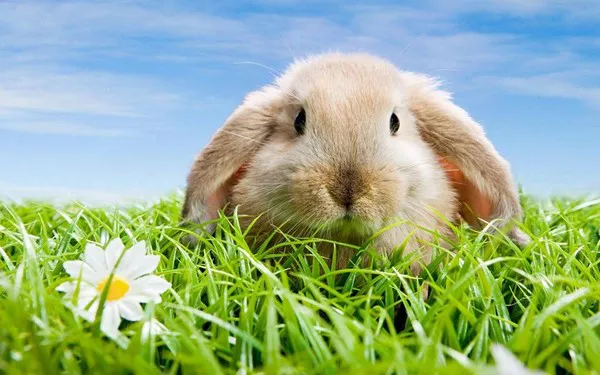Imagine walking into your home and finding it impeccably clean, with your rabbit using a litter box just like a cat. It might sound like a fantasy, but training a rabbit to use a litter box is not only possible—it’s highly achievable with the right approach. Litter box training a rabbit can transform your living space and strengthen the bond between you and your furry companion. Let’s embark on this journey to discover how you can teach your rabbit this neat and tidy habit.
Understanding Rabbit Behavior
Before diving into the specifics of litter box training, it’s essential to understand your rabbit’s natural behavior and instincts. Rabbits are prey animals with unique habits and needs that influence their training.
Natural Instincts and Habits
Territorial Marking: Rabbits have a strong instinct to mark their territory. In the wild, they use urine marking to communicate with other rabbits. This instinct can be harnessed in litter box training.
Cleanliness: Rabbits are relatively clean animals. They prefer to keep their living area tidy and will naturally choose a specific spot to relieve themselves. This makes litter box training feasible.
Routine: Rabbits thrive on routine. They often follow a predictable schedule for eating, sleeping, and eliminating. Establishing a routine can aid in successful litter box training.
Getting Started with Litter Box Training
Training a rabbit to use a litter box involves several steps, from selecting the right box to rewarding good behavior. Let’s break down the process step by step.
Choosing the Right Litter Box
The first step in litter box training is selecting the right litter box. Here are some factors to consider:
Size: Choose a litter box that is large enough for your rabbit to comfortably enter and turn around in. A box with low sides is ideal for easy entry and exit.
Material: Opt for a box made of durable, non-toxic materials. Avoid boxes with sharp edges or potential hazards.
Design: Some litter boxes come with high sides or covers. While these can help contain mess, they may be intimidating for smaller rabbits. Choose a design that suits your rabbit’s comfort level.
Selecting the Right Litter
Choosing the right litter is crucial for effective training. Not all types of litter are suitable for rabbits. Here are some options:
Paper-Based Litter: Made from recycled paper, this litter is absorbent and gentle on your rabbit’s paws. It’s also dust-free and biodegradable.
Hay-Based Litter: Made from compressed hay, this option is both absorbent and safe for rabbits. It also provides a familiar scent that may encourage use.
Wood Pellets: These are highly absorbent and control odors well. However, they can be a bit rough on sensitive rabbit paws, so ensure they are finely processed.
Avoid: Cat litter, clumping litter, and cedar or pine-based litters are not recommended. They can be harmful to rabbits due to dust or chemicals.
Setting Up the Litter Box
Proper setup of the litter box is key to successful training. Follow these steps:
Placement: Place the litter box in an area where your rabbit already tends to eliminate. Rabbits often choose a specific corner for their needs, so positioning the box in this spot increases the likelihood of success.
Filling the Box: Add a layer of litter about 1 to 2 inches deep. Avoid overfilling, as it may make the box less inviting.
Adding Hay: Place a small amount of hay in the litter box. Rabbits often eat while they eliminate, so providing hay can make the box more appealing.
Encouraging Use of the Litter Box
Encouraging your rabbit to use the litter box involves creating positive associations and reinforcing good behavior.
Positive Reinforcement: Whenever your rabbit uses the litter box, reward them with a small treat or affection. Positive reinforcement helps them associate the box with something pleasant.
Consistent Routine: Maintain a consistent routine for feeding and cleaning the litter box. Rabbits are creatures of habit and will adapt better to a predictable schedule.
Clean Up Accidents: If your rabbit has accidents outside the box, clean the area thoroughly with an enzymatic cleaner. This removes any lingering scent that might encourage repeat behavior.
Handling Common Challenges
Litter box training may come with its challenges. Here are some common issues and how to address them:
Refusal to Use the Box: If your rabbit refuses to use the box, check the litter type and box placement. Ensure the box is clean and accessible. You may need to try different types of litter or adjust the box’s location.
Multiple Elimination Spots: Some rabbits may mark multiple areas. Place additional litter boxes in areas where your rabbit frequently eliminates. Gradually reduce the number of boxes as they learn to use the primary one.
Chewing the Box: Rabbits may chew on the litter box, especially if it’s made of plastic. Provide chew toys and ensure the box is sturdy and safe.
Maintaining the Litter Box
Once your rabbit is consistently using the litter box, ongoing maintenance is crucial to keep the training successful.
Regular Cleaning
Daily: Remove soiled litter and waste daily. This helps control odors and keeps the box hygienic.
Weekly: Clean the entire box with warm, soapy water and rinse thoroughly. Avoid harsh chemicals that could be harmful to your rabbit.
Refilling the Litter
Add fresh litter to replace the soiled material. Keep the depth of the litter consistent to maintain your rabbit’s comfort.
Monitoring Health
Observe your rabbit’s behavior and health. Changes in their litter box habits can indicate health issues. If you notice unusual behavior or signs of illness, consult a veterinarian.
Advanced Tips for Successful Litter Box Training
For those who want to take their litter box training to the next level, here are some advanced tips:
See Also: Can Rabbits Eat Rye Hay?
Utilize Multiple Litter Boxes
If you have a large space or multiple rabbits, consider using several litter boxes. This can help prevent territorial disputes and accommodate different elimination preferences.
Create a Litter Area
Designate a specific area in your rabbit’s living space for the litter box. Adding a small pen or enclosure around the box can provide additional security and encourage use.
Incorporate Training Sessions
Hold short training sessions where you place your rabbit in the litter box after meals or naps. This reinforces the behavior and helps establish a routine.
Observe and Adjust
Pay attention to your rabbit’s habits and preferences. Adjust the litter box setup as needed to ensure it remains appealing and effective.
Conclusion:
In conclusion, training your rabbit to use a litter box is a rewarding process that can enhance both your rabbit’s and your own quality of life. With patience, consistency, and positive reinforcement, you can teach your rabbit this valuable habit.
A well-trained rabbit enjoys a cleaner living space, better health, and a more harmonious relationship with their human family. By understanding your rabbit’s behavior, choosing the right supplies, and maintaining a clean environment, you create a positive and successful litter box experience.
So, embrace the journey of litter box training with enthusiasm and dedication. The satisfaction of watching your rabbit happily and healthily using their litter box is well worth the effort. Through this process, you not only foster good habits but also build a stronger, more trusting bond with your beloved pet.
Related Topics:

























